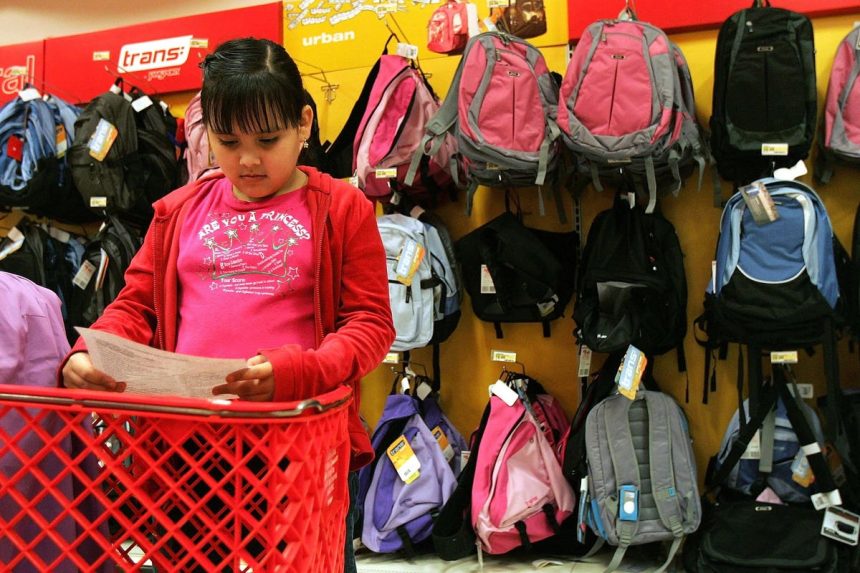Students across the United States are returning to class for the 2023-24 school year. Some K-12 students began school in mid-July. Others begin after Labor Day. In my area, back-to-school items were on sale in mid-June.
No matter your timing, schools and families must be attentive to the needs of returning students and staff. Top concerns for the new school year revolve around student academic progress, increased school days and instructional hours, teacher vacancies, and altered state-level expectations for teacher qualifications.
U.S. students have experienced unplanned online or compromised instruction since Covid-19 forced school closures in 2020. Children who began kindergarten in fall 2020 are entering third grade this year. These students are particularly impacted by what the U.S. Department of Education calls “lost instructional time” when specifically addressing the academic impact of Covid-19 on children in grades K-12.
A 2022 Amplify study shows pandemic-related early literacy learning losses are “disproportionately concentrated in the early elementary grades (K–2).” The critical early school years have passed for this year’s third graders, and their literacy challenges lie before them.
Distressful academic data exists for older students as well. The June 2023 release of the National Assessment of Educational Progress Long-Term Trend Report shows declines in reading and math scores for 13-year-olds across the U.S. Similarly, 2022 NAEP average score declines are seen in mathematics and reading in fourth and eighth grades. Declines are not universal, however. For example, public school eighth grade reading scores were down overall, with declines in 30 states or jurisdictions (including Washington, D.C. and Department of Defense schools), but with no significant change in 22 others. Some Covid-related practices and outcomes were more positive than others.
In 2023, schools are searching for ways to recover lost classroom time and provide high-impact instruction. Many are looking at their calendar models.
While the traditional academic year generally consists of 180 instructional days, most school districts continue to utilize a 10-month calendar and a lengthy summer break that offers school and enrichment opportunities. Attempting to avoid summer learning loss, year-round schedules (with acknowledged pros and cons) stretch the 180 days out in a variety of models that offer an alternative structure, but not additional instructional days. In 2019, Texas approved an Additional Days School Year funding formula to allow 30 additional instructional half days in elementary schools.
Post-Covid, schools are looking to add instructional time whenever possible but must do so with cost in mind. Many states have utilized federal Education Stabilization Funds to provide tutoring services, such as Tennessee’s TN ALL Corps Model, or to eliminate summer school costs for families. In Virginia, Richmond Public Schools added 20 instructional days to the 2023-24 academic calendar. This 200-day academic year serves two elementary schools with high populations of economically disadvantaged families. This seemingly logical, yet costly, pilot project is funded by Covid-19 stimulus funds. A full additional month of instruction adds significant costs to a district’s bottom line, so funding this model in the future without state and local legislative support is in question. States must explore and determine what practices will be sustainable when Covid-related funds expire.
As we enter the 2023-24 school year, schools must work with the financial, material, and human resources they have in place. One area to watch is the makeup of the teaching force. While schools are working strategically to increase instructional time and facilitate high-impact learning, most are also scrambling to fill teacher vacancies. According to Law Insider, a teacher vacancy is “a position to which a single designated certificated employee has not been assigned at the beginning of the year for an entire year.”
The rhetoric and real numbers around the teacher vacancy crisis continue to escalate. The exodus is real.
According to a 2022 National Center for Education Statistics report, 4% of all teaching positions and 6% of all non-teaching positions in U.S. public schools were vacant. Multiple teaching vacancies were reported in 27% of schools, with special education, English as a Second Language, and computer science vacancies topping the list. The same report notes significant supply-chain and food services disruptions that further complicate school functions.
Just released Learning Policy Institute data estimates more than 300,000 positions “were either unfilled or filled by teachers not fully certified for their assignments, representing about 1 in 10 of all teaching positions nationally.” These vacancies are not uniformly spread across all regions and demographics.
As teacher vacancies bring a perfect (and unwelcome) storm, states have begun to rethink and alter teacher certifications. The number of unqualified and underqualified teachers in classrooms this school year is complicated and worrisome. Emma Garcia of the Learning Policy Institute notes, “Unfortunately, given current shortfalls, some states and districts are bringing in more underprepared teachers: a recipe for continued turnover and growing achievement gaps. Though well-intended, these short-term fixes will only perpetuate ongoing shortages.”
An eight-year study of New York City fourth and fifth graders found teacher quality and teacher turnover negatively impacted student achievement in English/language arts and math, and this impact can be disproportionate in “schools with large populations of low-performing and Black students.” Due to a variety of factors, the negative reach of teacher turnover also impacts the students of teachers who stay from year to year.
There is much to consider in the coming year. If teachers are viewed as responsible for declining NAEP scores, how will future teachers change the trend in student outcomes? And how will the churn of teacher turnover be reduced as more teachers are less prepared for the classroom?
The education community—parents, students, school leaders, teachers, legislators and more—is grateful for and welcomes aspiring educators. The same community now must consider how to ensure all educators are equipped with the skills and qualifications necessary to both stay in the profession and help students accelerate future learning.
Considering the crucial events happening in K-12 education right now, each of these issues deserves significant attention. If you are a fan of the cooking competition shows, think of this article as an amuse-bouche of sorts—a taste of discussions to come.
Read the full article here










